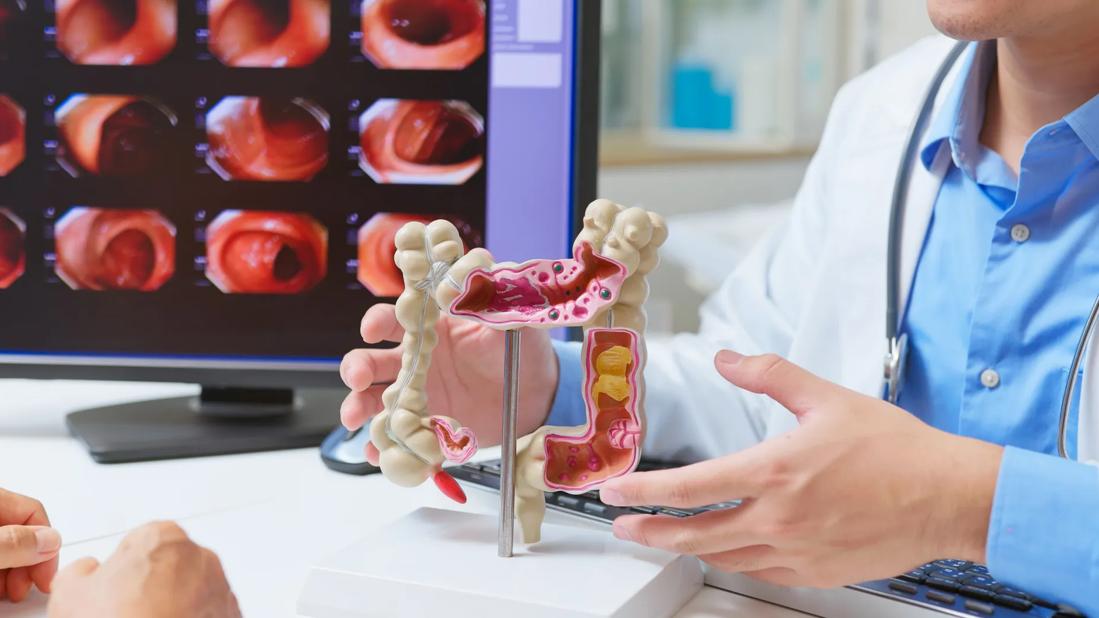Key points highlight the critical role of surveillance, as well as opportunities for further advancement in genetic counseling

Patients with colonic oligopolyposis of unknown etiology (CPUE) present a persistent clinical challenge. During this year’s American College of Gastroenterology (ACG) Annual Meeting, a team of Cleveland Clinic researchers shared a compelling study that provides much-needed clarity on this patient population.
Advertisement
Cleveland Clinic is a non-profit academic medical center. Advertising on our site helps support our mission. We do not endorse non-Cleveland Clinic products or services. Policy
Among their key findings: these patients tend to be older males with high rates of tobacco and alcohol use, and about one-third have a family history of colorectal cancer. Notably, nearly one-third of these patients also had adenomas in the upper GI tract, reinforcing the need for upper GI surveillance.
“Colonic oligopolyposis of unknown etiology, or CPUE, is defined as the presence of 10–99 cumulative colorectal adenomas in the absence of identifiable pathogenic variants in known polyposis-associated genes,” notes study author Carole Macaron, MD, of Cleveland Clinic. “Much of what we know about this group comes from registry-based studies, which are often limited by referral or ascertainment bias. Our goal was to take a different approach — using pathology data to identify patients in a way that gives us a more representative and unbiased clinical snapshot.”
With the rise of high-definition endoscopes and improved adenoma detection rates, clinicians are increasingly encountering patients with 10 or more adenomas. However, guidance on how to manage this group remains limited.
To gain a better understanding of these patients and their unique needs, Dr. Macaron and colleagues conducted a retrospective chart review to identify patients with 10–99 cumulative colorectal adenomas diagnosed between March 2009 and December 2023 through the Cleveland Clinic’s pathology database.
Patients with a known hereditary colorectal cancer syndrome—either personally or in their family—were excluded. Manual chart review ensured that each patient met the strict inclusion criteria: ≥10 adenomas and negative results on a multi-gene panel test.
Advertisement
Of 358 eligible patients with 10-99 cumulative colorectal adenomas, 188 (30.6%) were referred for genetic testing. Among those, 57 patients (48%) were ultimately diagnosed with CPUE. The median age at diagnosis was 60 years, with a majority being white (85.7%) and male (60.7%). Notably, 61.4% had a history of tobacco use, and 72% reported alcohol use. Additionally, 35.7% had a first- or second-degree family history of colorectal cancer.
Over the course of follow-up, patients underwent an average of four to five colonoscopies, with each procedure, with about four to five adenomas resected on average per procedure, Dr. Macaron reports. Among the 37 patients who underwent upper endoscopy, 32.4% had upper gastrointestinal adenomas — most commonly gastric (75%), followed by duodenal (42%) and ampullary (8.3%). Thyroid nodules were identified in five of the eight patients (62.5%) who underwent thyroid ultrasound. Fine-needle aspiration was performed in one patient, with no thyroid cancer detected.
“Upper gastrointestinal adenomas were present in approximately one-third of patients, consistent with prior studies, underscoring the risk of upper GI neoplasia in this population and supporting the need for upper gastrointestinal surveillance,” note Dr. Macaron and colleagues.
The study highlights several important considerations for practicing gastroenterologists, according to Dr. Macaron:
Advertisement
Reflecting on the broader implications of the study, Dr. Macaron emphasizes that the findings both reinforce existing data and underscore the importance of larger, multicenter investigations.
“To get such a clean group of patients using a strict definition, our sample narrowed down significantly,” she explains. “We started with around 300 patients and, after applying our inclusion criteria, ended up with just 57. That really highlights the need for collaborative, multicenter studies to better understand this population.”
Recognizing the limitations of a single-center, retrospective design, Dr. Macaron and her team are already preparing for the next phase of research. Plans are underway to establish a dedicated registry and partner with other institutions to build a larger, more diverse cohort of patients with CPUE.
The overarching goal is to better define the natural history, metachronous risk, and long-term cancer outcomes in this population. “Hopefully, within the next year or so, we’ll have a much larger sample and clearer estimates of the risk of developing new neoplasia or even cancer over time,” she says.
For endoscopists and GI specialists, the clinical message is clear: patients with multiple adenomas—regardless of known genetic mutations—warrant close attention. “Endoscopists will often be the ones to make the call when they realize a patient has had more than 10 adenomas over their lifetime,” Dr. Macaron notes. “At that point, think of a genetic testing referral.”
Through their research efforts, Dr. Macaron and colleagues offer evidence that supports broader screening, closer surveillance, and a renewed push for genetic counseling in a population that may otherwise be overlooked.
Advertisement
Presentation Information
Abstract: “Colonic Oligopolyposis of Unknown Etiology: A Single-Center Experience”
Advertisement
Advertisement

Simple score uses clinical factors to identify patients who might benefit from earlier screening

Greater awareness among young patients is needed

Poor response may be due to different tumor biology

Study sheds light on distant metastasis rates between upfront surgery and Watch & Wait strategies

Insights indicate that treatment may be beneficial beyond MSI-H tumors

Tips on how to recognize the condition and budesonide treatment guidance

Findings could help promote organ preservation

Surgery, chemotherapy improve outcomes among EOCRC patients